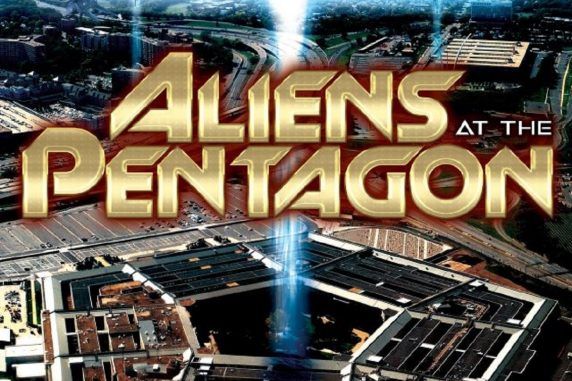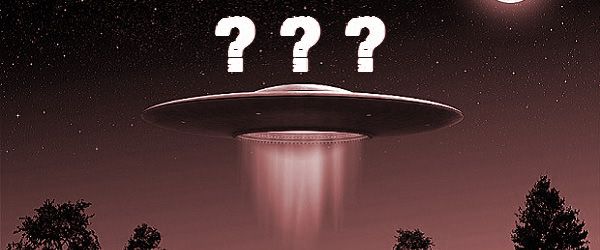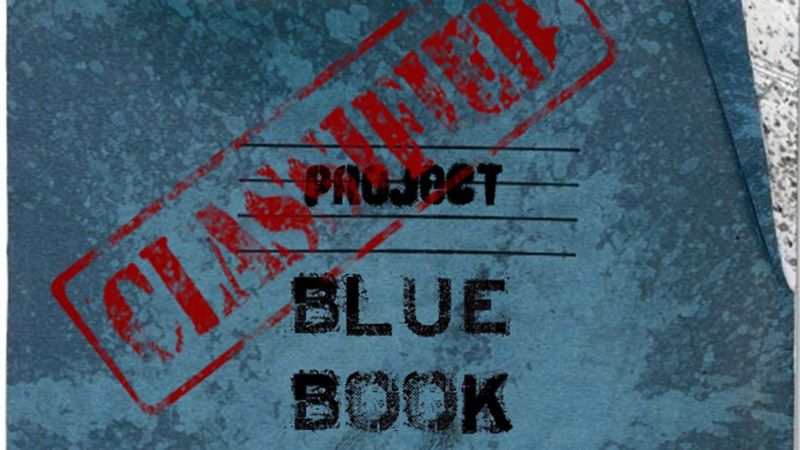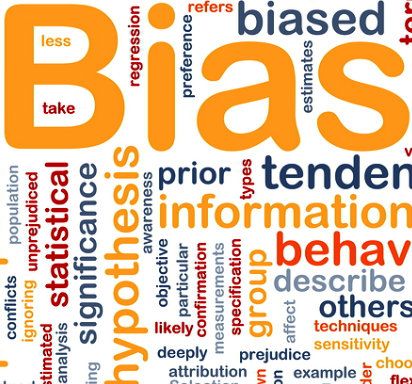 The good news unbeknownst to many is that much of the debunking criticism against the extraterrestrial hypothesis, ufology, exopolitics, experiencers, socially conscious insiders and/or whistleblowers can be considered as rationally flawed.
The good news unbeknownst to many is that much of the debunking criticism against the extraterrestrial hypothesis, ufology, exopolitics, experiencers, socially conscious insiders and/or whistleblowers can be considered as rationally flawed.
Institutional defenders of conventional, official truths have sometimes avoided the UFO question but have occasionally misrepresented facts. For example, as physicist Stanton Friedman often points out, the Secretary of the Air Force D. Quarles said to reporters that no flying saucer had flown over the U.S.; that only 3% of reports received by Project Blue Book remained “unknown”and that eventually even that percentage would be identified as conventional phenomena or illusions. But in, truth, the percentage of overall “unknowns” which had been presented earlier inside the Air Force by Project Blue Book’s Special Report number 14 had been 21.5%. Furthermore, if the witnesses level of education was greater and the case provided greater details, the percentage of “unknowns” went up to 30%. Moreover, a chi square analysis performed by Battelle Memorial Institute comparing “unknowns” with the “knowns” (or clearly identified objects) gave a probability of less than 1% that the “unknowns” would simply be misperceptions or mistakes. Therefore, there was at least a truly puzzling phenomenon taking place (in fact worldwide) even though it was being publicly dismissed while secretly reported in a completely different manner.
An accumulation of observations is important and an accumulation of analyzed witness testimonies does not have to be a form of weak or irrelevant evidence in the natural sciences. Inductive reasoning is most fundamental to the advancement of SCIENCE because experience is what brings in data and information that requires new explanations. New scientifically designed, international, anonymous surveys with a larger, anonymous population like that conducted by F.R.E.E. (the Edgar Mitchell Foundation for Research into Extraterrestrial and Extraordinary Encounters (www.experiencer.org)) provide statistical patterns that increase the gravitas of testimonial evidence. It is unreasonable to simply think that thousands of witnesses are lying or definitely mistaken in their observations although they are willing to anonymously answer hundreds of questions. There is a place for human testimony, not only in the social sciences and in a court of law but also in the natural sciences. In part it depends on how scientifically that testimony is acquired and treated. This statistical quantitative and qualitative data (which in some important aspects contradicts popular notions about extraterrestrials) must be taken into account.
Science advances when theories adapt to evidence and experience and theories should not be considered final but, rather, well-organized, temporary and probable explanations that best explain phenomena and data accumulating through experience. Taken as well-organized explanations – hopefully with predictive power – theories must evolve as new data and experiences are registered and accepted. However, oftentimes, the acceptance of data and phenomena is precluded by biases and there often are sociological and psychological reasons to unscientifically reject phenomena that don’t fit in well with accepted theory.
It is becoming clear that we only perceive a limited segment of reality. There may well be ‘laws of physics’, inter-reality processes and types of energies that contend with phenomena not currently accepted by mainstream science, an endeavor still excessively biased toward representing all experienced reality as based upon materialism and mechanicism. This occurs in spite of alternative implications from quantum physics regarding the “de-materialization” of matter and the inseparable role of choice, consciousness and the observer affecting what seems to be a non-local, information substratum.
Status quo power networks traditionally reject new perceptions of reality both when new instruments extend human detection and decoding capacities (remember Galileo’s telescope and Van Leewenhoek’s use of the microscope) and when theories and underlying worldviews need to be modified to account for those detections. But this holding on at all costs to a classical preference for exclusivist materialism and mechanicism lends itself to the fallacy of trying to explain all phenomena under specific and previously accepted ad hoc explanations. Regardless of how thoroughly the scientific method has been followed, this often means trying to explain some phenomena which MAY be conventionally explained as if it necessarily follows that their explanation MUST be conventional. This is also popularly also called “dogmatism.”
But it is becoming quite acceptable for educated individuals to recognize that there indeed is an abundance of recurrent phenomena (“anomalies” from the perspective of conventional theories) unremittingly reported by credible individuals and groups around the world; phenomena which – if seriously considered – bring into question the completeness of classical materialist and mechanicist explanations. Furthermore, individuals not intimately associated with any of the major modern institutions often have the willingness and freedom to openly consider these phenomena real and significant. Some even know that their formal acceptance would logically require re-assessing known theories and suggesting alternative scientific hypotheses. Some are – thankfully – taking the lead to make this happen.
Baye’s Theorem helps us ASSESS the probability that a hypothesis among others is valid based on new experience. In the XXVIII Century Reverend Thomas Bayes tried to show how to use new evidence to update beliefs. It goes hand in hand with induction and not with a rigid, unequivocal logical deduction. Through induction, we approximately “know” that it is more likely that Earth will continue turning and that tomorrow there’ll be another sunrise, but we don’t know this with absolute certainty. Like the so-called “principle of parsimony” (or “Occam’s Razor”) Baye’s Theorem is more like a “heuristic,” which can be understood as a general rule of thumb helping us to assess the validity or usefulness of a hypothesis. Both are “shortcuts” simply assisting us to come up with probable explanations. However, if we apply them mechanically based on wrong premises about reality they may even sidetrack us into not recognizing more feasible and obvious explanations.
Baye’s Theorem requires having several hypotheses at hand in order to compare them. It is structured to help us come up with an approximate probability and it states that The Probability of an Hypothesis Explaining the New Results = The Probability of Obtaining the New Results if the Hypothesis is True ÷ The Probability of Getting the New Results Whether the Hypothesis is True or Not. Then, multiply that division by The Probability of the Hypothesis Before Considering the New Results.
Just like Baye’s Theorem is a practical recommendation attempting to approximately give us a clue on the probability of the validity of an hypothesis by also considering several competing hypotheses in light of new information regarding phenomena, “Occam’s Razor” is not like a physical principle or a principle set in stone as an unfailing rule. The latter (re-stated by several philosophers following Aristotelian thinking but also more associated with theologian, nominalist philosopher and Franciscan friar William of Occam) basically states: “entities should not be multiplied beyond necessity.” To my understanding, this means that when an explanation is sufficient to explain a phenomenon, it is not recommended to seek a greater number of alternative explanations. However, in the case of phenomena challenging conventional explanations, the question would also be if all possible “sufficient explanations” rest upon a classical materialist-mechanicist worldview or, in effect, that the most straightforward and sufficient explanation would be a hypothesis that better fits or corresponds with the facts, however challenging.
Another way of stating “Occam’s Razor” is that it is generally preferable not to assume more hypothesis as causes than the minimum necessary to explain a phenomenon. Said differently, trying to extend the materialist and mechanicist worldviews (and paradigms) in convoluted ways in order to reductionistically explain (or to explain away) the experiential facts and “anomalous” data gathered around the UFO Phenomenon, may actually be not following Aristotle’s and Occam’s recommendation but instead doing just the opposite. While exclusivist materialism is clearly incorrect and insufficient, materialism in itself may be correct but only as an integral part of a network of metaphysical positions, each explaining “reality” from a different angle and all of them arising from a deeper pattern. We will need to understand that “deeper pattern” in order to make sense of phenomena that objectively combine subjective and psychic aspects altering conventional physical life.
Once again, these “heuristics” are basically recommendations generally useful on how to proceed to choose among various hypotheses that might explain a phenomenon. Moreover, unfortunately “Occam’s Razor” has often been misunderstood by closed-minded skeptics (normally defending conventional theories associated with materialism and mechanicism) in their blindly dogmatic search for every which way to ridicule or dismiss evidence pointing toward the “extraterrestrial hypothesis” (or variations within that hypothesis) pertaining to some of the most ‘anomalous’ aspects of the UFO phenomenon.
There’s still another recommendation that can be considered as a useful heuristic. It is the advice to avoid Type Two Errors. In statistics, a null hypothesis is a hypothesis one tries to cancel out by using evidence to the contrary. In statistical hypothesis testing, a Type II Error (or Error of the Second Kind) is the failure to reject a FALSE null hypothesis. In other words, it is a failure to detect some aspect of reality that is suggested by the statistical evidence. This becomes a useful heuristic to think about any accepted percentage of truly unconventional UFO cases.
The concept that “UFO’s are nothing but natural phenomena or phenomena that can be explained by conventional science” would be a false null hypothesis that has not been invalidated based on the best UFO evidence and statistics. This is because the evidence and statistics clearly also suggest that something truly distinct and quite possibly anomalous is going on. Fixated UFO debunkers (and debunkers of the reasonable likelihood of there being genuine “experiencers” interacting with a variety of intelligent extraterrestrial beings which may be able to manipulate spacetime in unconventional ways) are clearly committing a Type Two Error or Error of the Second Kind.
The relevant and scientifically honest (and highly relevant for humanity) situation here is that the “extraterrestrial hypothesis” or ETH (if not limited to a “nuts & bolts” approach) may well be the MOST STRAIGHTFORWARD HYPOTHESIS OR EXPLANATION. In general this hypothesis is not discarded within some foreign governments and Air Force teams researching “Unidentified Aerial Phenomena” or “Anomalous Aerial Phenomena” (like the Chilean CEFAA or Committee for the Studies of Anomalous Aerial Phenomena functioning under the General Secretary of the DGCA (the Ministerial Department of Civil Aeronautics), itself under the jurisdiction of the Chilean Air Force).
The initial (often not quoted) step in the “scientific method” is observation of a phenomenon in the natural world. While individual testimony of an anomaly in a non-controlled setting may be considered a weak piece of evidence, the fact that thousands upon thousands (including some astronomers) have observed and reported UFOs that resist conventional explanations can be considered part of the initial step. Today, besides these individual testimonies (given to civilian and military institutions) there have been a few scientifically conducted surveys (like the anonymous international survey Edgar Mitchell Foundation for Research on Extraterrestrial and Extraordinary Encounters). As witness testimony goes, the latter is stronger from a natural science point of view. However, besides witness testimony, after-the-event analysis of photographs, radar cases, landing traces with soil modification and other forms of “physical evidence” also accumulate in favor of the “Extraterrestrial Hypothesis (ETH).”
The ETH hypothesis is neither discarded beforehand (for instance by introducing pre-conceived conclusions into the premises) by the high-level military and scientific French GEIPAN (Study Group and Information on Non-Identified Aerospace Phenomenon) analysts working under the jurisdiction of CNES (the National Center for Space Studies) who in 1999 produced the so-called “COMETA Report.” Likewise, this reasonable hypothesis is endorsed by the “Sigma/3AF Commission” of the Aeronautical & Astronomical Association of France. In fact, given the evidence available, the ETH cannot be reasonably discarded in advance without incurring dishonesty. Sigma/3AF considers the ETH valid and plausible. They are scientists and are being reasonable – rather than dogmatic – based on a rational analysis of UAP/UFO cases.
Moreover, it might be possible to improve “after-the-fact ufology” by propitiating field experiments that interact with the phenomenon. If consciousness (besides objectivity) is a key ingredient for their success, so be it. The science-based ufologist expanding his or her methods would learn to work with this.
Interactive field experiments using instruments and live empirical observation to test hypothesis might be achievable with the assistance of CE-5 approaches, “prime contactees,” adequate preparation, equanimity and fearlessness and – above all – a respectful attitude of any intelligences behind the phenomenon as well as experiencer-contact processes that involve consciousness, group effort, feelings and ideologies. Through this “experimental ufology” we may complete the steps of the scientific method pursuant genuine UFOs: Observation of a phenomenon, gathering information about what is known about it, proposing a reasonable hypothesis to explain the phenomenon, testing the hypothesis, analyzing the results, concluding if they verify the hypothesis or not, sharing the method, results, and conclusions with other scientists, replicating the research and – eventually – modifying theory.
Humanity needs its academic, religious and political leaders to come to terms with the fact that the ETH is a reasonable and rational perspective backed-up by the finest inductively-derived, independently assessed and cross-tabulated evidence gathered by sincere, mentally sound, capable and reputable UFO researchers across several decades; by some courageous and honest scientists, a good number of political, military and intelligence community whistleblowers and witnesses and by thousands of individuals from around the world (individuals who for the most part don’t do it for personal gain but who, instead, oftentimes face ridicule from peers in the name of truth).
This evidence also includes, highly trained witnesses capable of recognizing a variety of flying objects, alleged landings leaving anomalous and analyzed physical signatures, clear visual, radar and radar-visual sightings, military intercept missions; photographic and film analyses passing adequate tests, the analysis of a few solid objects with highly anomalous characteristics (such as those which podiatric surgeon Roger K. Leir collected from alleged abductee-experiencers) and leaked or formerly classified government documents that indicate longstanding, official interest in “flying discs,” “flying saucers” or “UFO anomalies.”
Moreover, after thousands upon thousands of psychologically healthy and socially functional “citizen-experiencers” reporting intelligent physical interactions with otherworldly extraterrestrial beings; after metallic-looking disc-shaped, triangular-shaped, sphere-shaped and tubular-shaped objects have been reported zigzagging and departing in abrupt ways defying momentum and inertia (sometimes after apparently interacting with witnesses for instance by responding with right-angle formations) the lack of formal academic investigation onto what may be going on (at least from a social and psychological perspective) is a failure against modern, humanistic, democratic and scientific ideals.
It simply looks as if FEAR and personal convenience got the upper hand in the innards of modern academic and political institutions since facing the facts would probably challenge the premises those institutions are based in and thus internal social forces arise to prevent individuals from stepping out of line. To this we must add possible private interests to take advantage of technological developments besides the national security need to maintain a possible advanced technology out of reach from enemies; something which can be overdone and – once a vast secret apparatus around this issues has been established – it becomes increasingly difficult to eventually inform civilians as time passes by. Perhaps many unconstitutional actions were taken throughout the decades at least since 1947, especially if taboo, ridicule and a highly classified secrecy did not allow for the application of constitutional supervision or checks and balances.
Nonetheless, the forces of social control (among them ridicule), or even active repression and suppression cannot forever hold back the truth in order to sustain the status quo or an outmoded way of thinking, especially if the intermittent and phenomenon were to be interactive and clearly related with human interests.
In relation to UFOs, for the Principle of Parsimony (a.k.a. “Occam’s Razor”) multiplying explanations to uphold the materialist-mechanicist premises may not be the way to arrive at a “sufficient explanation.” Then, Baye’s Theorem asks us to compare several hypotheses and not to discard any plausible one offhand. Finally, the advice to avoid Type Two Errors or Errors of the Second Kind (the failure to detect some aspect of reality which is suggested by the statistical evidence) also reminds us to become aware of our blinding cognitive biases when the evidence is displayed before us within a complex phenomenon. I wonder how many “Close Encounters of the Second Kind” interesting pieces of unique evidence (as described by J. Allen Hynek’s six-fold classification scale for UFO encounters) have been so dismissed…
All of these HEURISTICS basically warn us against inflexibly holding on to our conventional ‘pet’ theories. In relation to truly anomalous UFOs and in the offing human-extraterrestrial interactive encounters we seriously need to change our premises and face the facts.
To conclude, the three heuristics mentioned are not inimical with the Extraterrestrial Hypothesis (ETH) and, what is more, an intelligent use of them clearly suggests that the ETH MUST be seriously considered. It is a matter of time before good old common sense prevails as the need to adapt to reality has the real final say with its own complex (emergent and self-organizing) ways to assert itself.


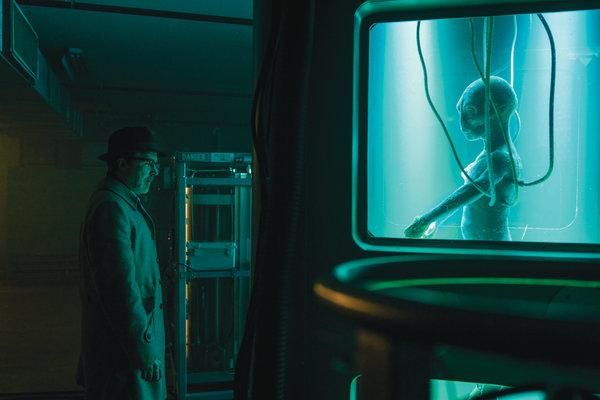
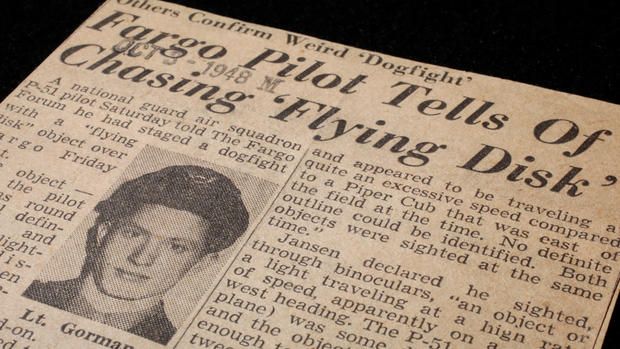

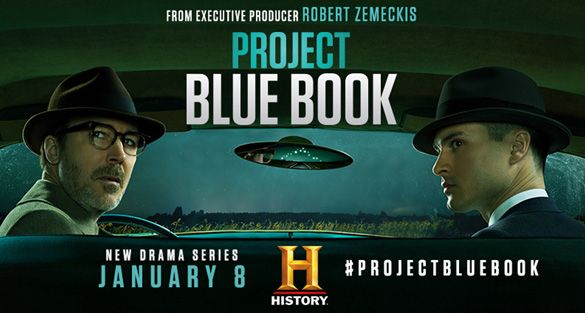



 “He hears this strange humming noise, so he turns around and sees this giant UFO,” said Brian Seech, co-founder of the Center for Unexplained Events. The unidentified flying object rises from behind the trees and hovers above them, the ground drenched in bright light.
“He hears this strange humming noise, so he turns around and sees this giant UFO,” said Brian Seech, co-founder of the Center for Unexplained Events. The unidentified flying object rises from behind the trees and hovers above them, the ground drenched in bright light.
